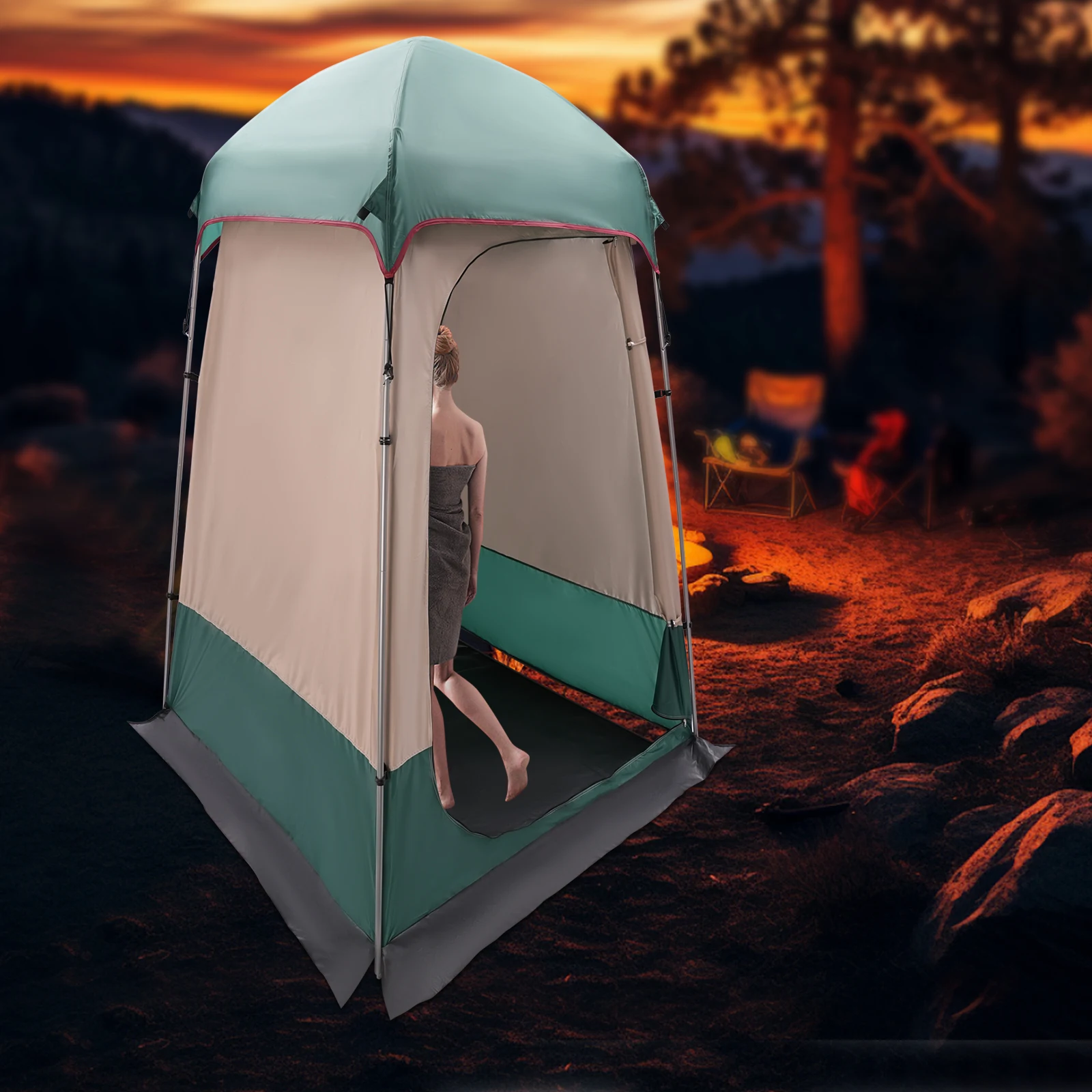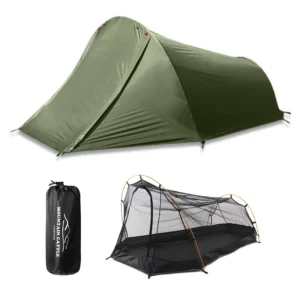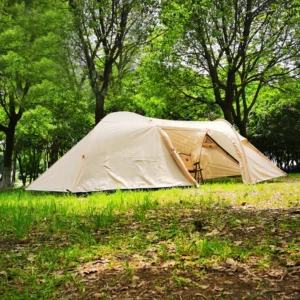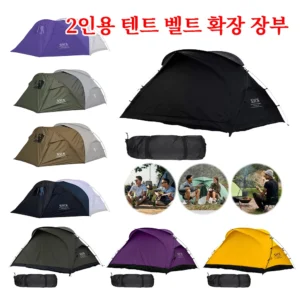Introduction
When planning a camping trip, few things are more important than staying dry. Pop-up tents have become increasingly popular for their convenience, but many campers wonder: are they actually waterproof? The short answer is yes, quality pop-up tents can be waterproof – but with important limitations and considerations that every camper should understand.
Waterproofing matters tremendously for pop-up tents because these convenient shelters are often used by casual campers who may not have extensive experience dealing with inclement weather. A sudden downpour can quickly turn a relaxing weekend getaway into a soggy nightmare if your shelter isn’t adequately protected.
In this guide, you’ll learn about waterproofing standards, crucial features to look for, and how to maintain your tent’s water resistance over time. We’ll also address the common skepticism around pop-up tent performance – after all, it’s reasonable to question whether something that prioritizes quick setup might sacrifice weather protection.
Most pop-up tents on the market advertise hydrostatic head ratings between 1,000-3,000mm, but what does that actually mean for keeping you dry? Understanding different shelter options for two campers helps make more informed decisions about what will truly keep you comfortable when the skies open up.
What “Waterproof” Actually Means for Tents
Before evaluating specific pop-up tents, it’s essential to understand what “waterproof” really means in the context of outdoor shelters. There’s a significant difference between water-resistant and truly waterproof materials:
- Water-resistant: Can withstand light moisture and brief, gentle rain showers but will eventually allow water penetration during sustained exposure
- Waterproof: Designed to prevent water penetration even during prolonged rain, though all tents have limits
The key metric for tent waterproofing is the hydrostatic head (HH) rating, which measures how much water pressure a fabric can withstand before leaking. This rating is expressed in millimeters, representing the height of a water column the fabric can support before water seeps through.
For a tent to legitimately claim “waterproof” status, the industry standard requires a minimum hydrostatic head rating of 1,500mm. However, understanding tent waterproof ratings reveals that higher numbers offer better protection in more challenging conditions.
| Hydrostatic Head Rating | Weather Conditions | What To Expect |
|---|---|---|
| 1,000mm | Light showers | Will resist brief, light rain but may leak in sustained precipitation |
| 1,500-2,000mm | Moderate rain | Adequate for typical weekend camping in mild conditions |
| 3,000-5,000mm | Heavy rain | Will stay dry during prolonged downpours and mild storms |
| 5,000mm+ | Severe weather | Can withstand driving rain, wind-driven precipitation, and snow load |
Remember that these ratings apply to the fabric itself under ideal conditions. Real-world performance depends on additional factors like seam construction, tent design, and proper setup – all of which we’ll explore next.
Critical Waterproofing Features in Quality Pop-Up Tents
Not all pop-up tents are created equal when it comes to keeping water out. The difference between staying dry and getting soaked often comes down to specific construction features that quality manufacturers prioritize.
Fabric and Coating Technology
The foundation of any waterproof tent is its fabric. Most quality pop-up tents use polyester with either polyurethane (PU) or polyethylene (PE) coatings. The thickness of this coating directly impacts the hydrostatic head rating. Better tents often feature multiple layers of waterproof coating on both sides of the fabric, increasing durability and water resistance.
Seam Construction
Seams are the most vulnerable points for water penetration in any tent. Key seam features to look for include:
- Double-stitched seams that provide mechanical strength
- Heat-sealed seams that melt the material together for a watertight bond
- Taped seams where waterproof tape is applied over stitching
- Welded seams that use ultrasonic technology to create seamless joints
The essential features in waterproof automatic tents often include a combination of these techniques to ensure complete protection.
Bathtub Floor Design
Quality waterproof pop-up tents incorporate what’s called a “bathtub floor,” where the floor material extends several inches up the tent walls. This design prevents ground water from seeping in where the floor meets the walls – a critical feature when camping on wet ground. The best designs have floors extending 3-4 inches up the sides with sealed or taped seams along this junction.
Rainfly Coverage
A full-coverage rainfly creates an additional water barrier and is essential for genuine waterproofing. Look for:
- At least 75% coverage for adequate protection
- Extension beyond windows and doors to prevent rain from dripping in
- Proper ventilation design that maintains airflow without allowing water entry
- Adequate distance between the rainfly and inner tent to prevent contact transfer
Quality Zippers and Storm Flaps
Even the best fabric becomes useless if water can enter through zippers. Waterproof zippers with protective storm flaps are essential components that prevent leakage at these high-risk entry points.
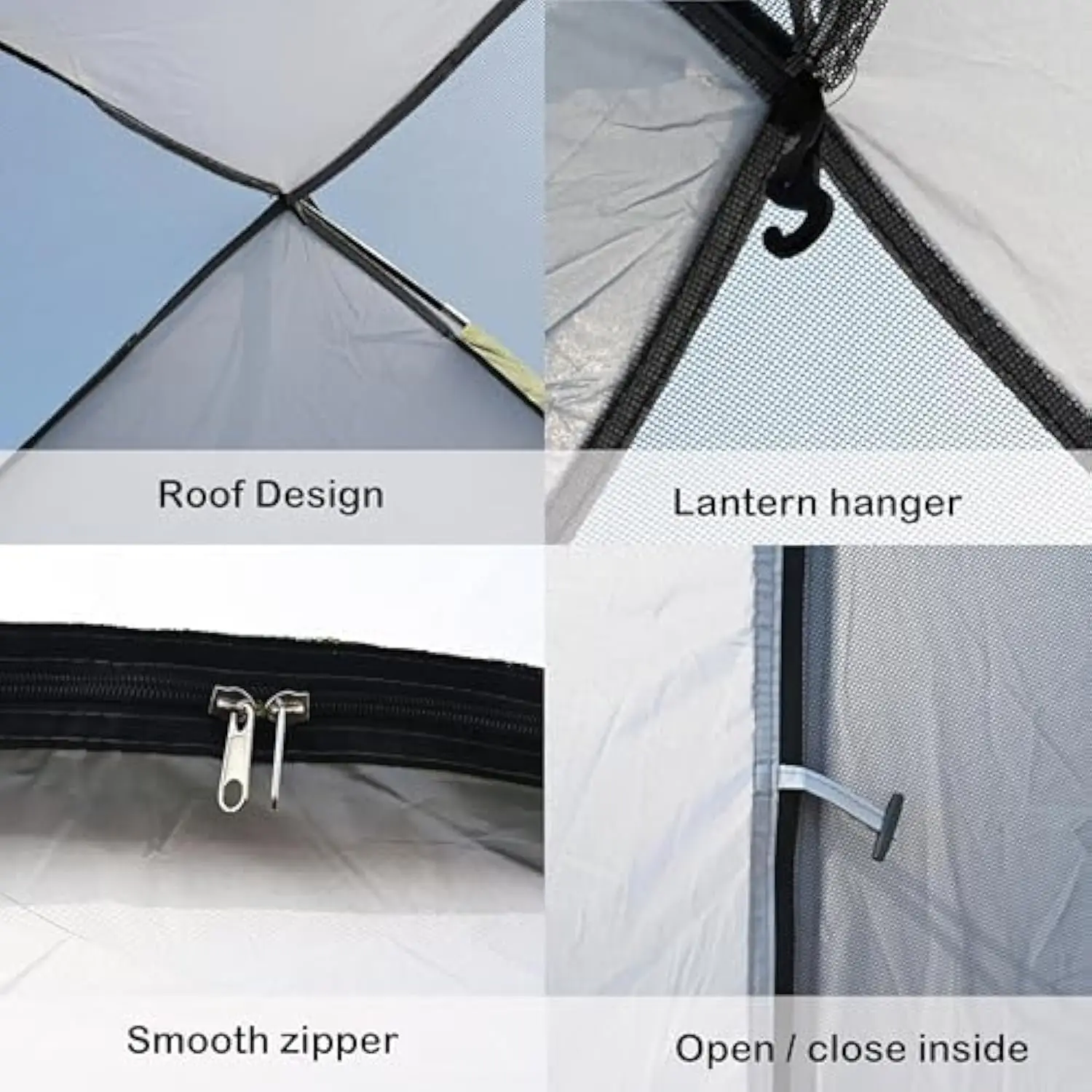
The Inherent Limitations of Pop-Up Tent Waterproofing
Despite advances in materials and design, pop-up tents face inherent limitations when it comes to weather protection. Understanding these constraints helps set realistic expectations for your outdoor adventures.
Convenience vs. Weather Resistance Trade-off
The very mechanism that makes pop-up tents so convenient – their spring-loaded or instant-setup frames – creates structural compromises. The flexible frame design necessary for instant deployment often results in less stability and tension in the rainfly, potentially creating pockets where water can pool during heavy rain.
Structural Differences
Traditional tents typically have more robust pole structures that create better tension across the fabric. This tension is crucial for proper water runoff. Pop-up tents, with their emphasis on simplicity, often have fewer adjustment points to optimize this tension. During extended rainy periods, a quality pop-up tent might keep you dry for 4-6 hours of moderate rain, but could struggle in continuous heavy downpours beyond that timeframe.
Condensation vs. Leakage
Many campers mistake condensation for leaks. The common waterproofing issues in pop-up tents often involve inadequate ventilation. Waterproof materials by nature prevent air exchange, which can lead to interior condensation as your body heat and breath create moisture that collects on tent walls. This isn’t technically a leak but still results in unwanted wetness.
Performance Expectations
The most vulnerable points where water tends to penetrate first include:
– Seam intersections, particularly at corners and peaks
– Zipper closures, especially if not covered by storm flaps
– Areas of high tension where the fabric stretches
– Spots where the rainfly touches the inner tent
Understanding these limitations doesn’t mean pop-up tents can’t be waterproof – it simply means you should choose models designed to address these issues and know when conditions might exceed their capabilities.
How to Evaluate a Pop-Up Tent’s Waterproof Claims
With many manufacturers making bold waterproofing claims, it’s important to know how to separate marketing hype from genuine protection. Here’s how to evaluate waterproof claims when shopping for a pop-up tent:
Key Specifications to Check
Start by looking for specific technical details rather than vague marketing terms:
– Precise hydrostatic head rating (in mm) for both the floor and fly
– Exact fabric specifications (e.g., “190T polyester with PU coating” vs. just “waterproof material”)
– Seam construction methods (taped, welded, or sealed)
– Specific features like bathtub floors and storm flaps
Interpreting Manufacturer Claims
Be skeptical of ambiguous terminology. “Water-resistant,” “water-repellent,” and “weatherproof” don’t guarantee the same protection as specific waterproof ratings. The materials used in waterproof hiking gear provide a good reference point for quality standards to look for.
Warning Signs of Inadequate Waterproofing
Watch for these red flags that often indicate poor waterproofing:
– No mentioned hydrostatic head rating
– Claims of being “weatherproof” without specific metrics
– Extremely low price points (proper waterproofing adds cost)
– Single-wall construction with no separate rainfly
– Customer reviews mentioning leakage issues
Budget vs. Premium Features
There’s a noticeable correlation between price and waterproofing quality. Entry-level pop-up tents under $50 typically offer minimal protection suitable only for fair weather. Mid-range options ($80-150) generally provide adequate waterproofing for weekend camping in moderate conditions. Premium pop-up tents ($150+) incorporate advanced waterproofing features similar to traditional camping tents.
Must-Have Features for a Truly Waterproof Pop-Up Tent
If staying dry is a priority, insist on these essential features when selecting your pop-up tent:
Adequate Hydrostatic Head Rating: For general camping, look for at least 2,000mm HH for the rainfly and 3,000mm HH for the floor. For challenging conditions or regions with frequent rain, aim for 3,000mm+ for the fly and 5,000mm+ for the floor.
Fully Taped Seams: Not just on the floor, but throughout the entire tent. Seam taping involves applying waterproof tape over stitching to prevent water from entering through the needle holes.
Appropriate Rainfly Coverage: A full-coverage rainfly that extends beyond doors and windows creates additional water protection. Avoid designs where the rainfly only covers the roof portion.
Quality Floor Construction: A durable bathtub floor with high side walls (3-4 inches minimum) prevents groundwater from seeping in. The floor should be made from thicker material with a higher waterproof rating than the walls.
Weatherproof Ventilation: Look for protected vents that allow airflow without allowing water entry. These reduce condensation while maintaining waterproof integrity.
When choosing the ultimate compact shelter for two, these waterproofing features should be non-negotiable if you camp in anything but guaranteed fair weather.
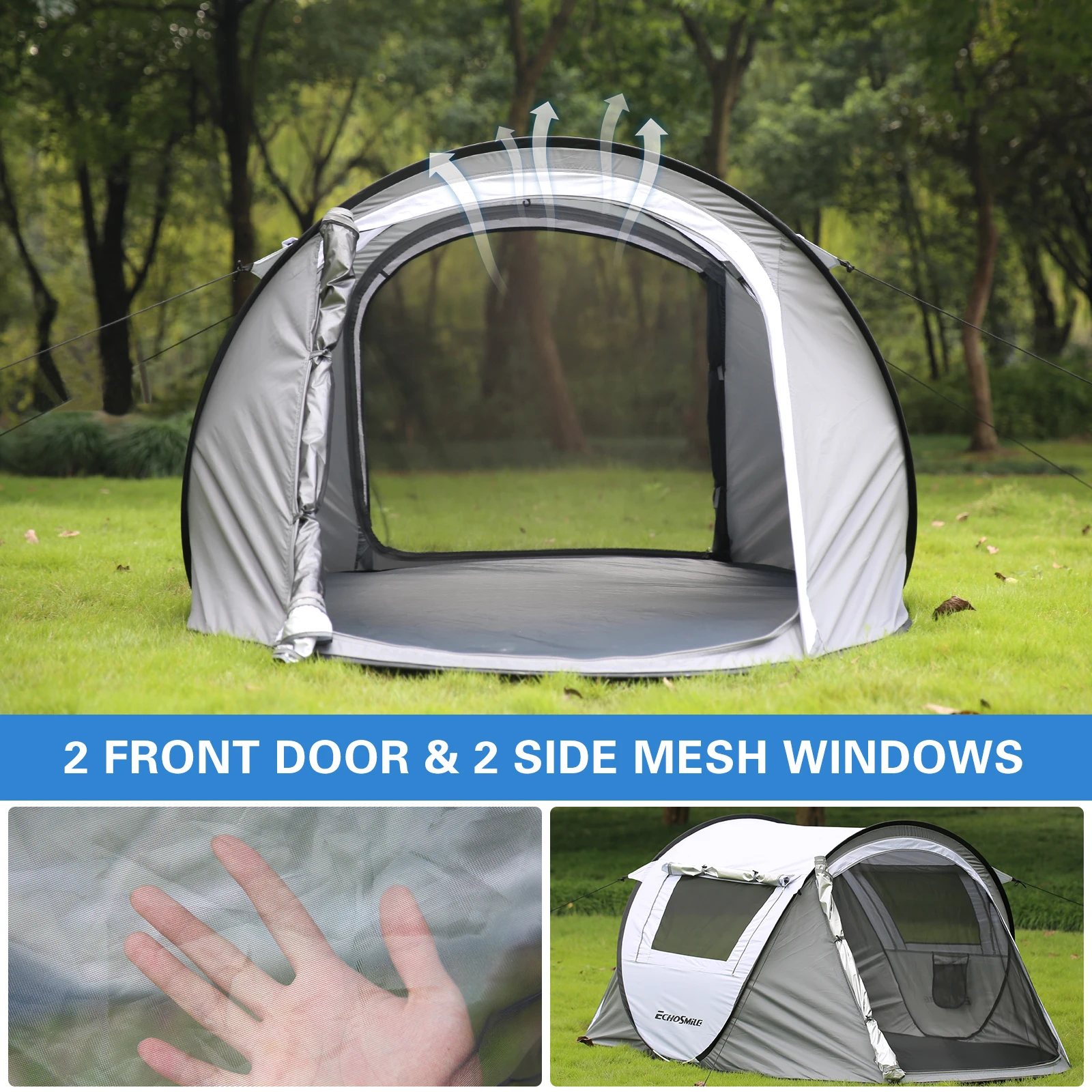
Testing Your Pop-Up Tent’s Waterproofing Before a Trip
Before relying on your pop-up tent in real-world conditions, it’s wise to test its waterproofing at home. This simple process can identify potential issues before you’re miles from shelter.
Home Testing Procedure
- Set up your tent completely, including the rainfly, on a dry day.
- Inspect all seams, zippers, and attachment points for signs of damage or poor construction.
- Check that all tension points are properly adjusted and the rainfly doesn’t sag anywhere.
- Using a garden hose with a gentle spray setting, simulate rainfall by spraying water evenly across all surfaces.
- Start with the roof and work down to the sides, giving special attention to seams and zippers.
- After 10-15 minutes of “rain,” check inside the tent for any signs of moisture penetration.
Problem Areas to Watch
Pay special attention to:
– Corners where multiple seams intersect
– Zippered doors and windows
– Areas where the rainfly touches the inner tent
– Floor edges where the bathtub construction meets the walls
Understanding what size tent is good for 2 people also helps ensure you’re not overcrowding the space, which can push sleeping bags against potentially vulnerable walls during rainy conditions.
Maintaining and Improving Your Tent’s Waterproofing
Even the best waterproof pop-up tents require maintenance to preserve their water-resistant properties. Regular care significantly extends their weather protection capabilities.
Essential Cleaning Protocols
Always clean your tent after use, especially if it’s been exposed to dirt, sap, or salt water. Use lukewarm water and mild soap (never detergent or bleach), gently scrubbing problem areas with a soft sponge. Allow the tent to dry completely before storage to prevent mold and mildew, which can damage waterproof coatings.
Reapplying Waterproofing Treatments
Over time and with use, the factory waterproofing on tents will degrade. Signs it’s time to reapply include:
– Water no longer beading on the surface
– Dampness inside during light rain
– Visible wear on coated surfaces
When reapplying waterproofing:
1. Clean the tent thoroughly and let it dry completely
2. Apply tent-specific waterproofing spray to the rainfly and outer surfaces
3. Use seam sealer on all external seams
4. Apply a separate floor waterproofing product if needed
Storage Practices
Always store your tent completely dry in a cool, dark place. Avoid compressing it in its stuff sack for long periods, as this can damage waterproof coatings and seam tape. Following proper maintaining waterproof gear care significantly extends the effective life of your tent’s weather protection.
Heavy Duty 4 Season Tent, Mountaineering Tent, Winter Camping Tent
$870.40 Select options This product has multiple variants. The options may be chosen on the product pageCompact Backpacking Tent, Lightweight Backpacking Tent, Waterproof Camping Tent
$335.52 Select options This product has multiple variants. The options may be chosen on the product pageUltralight Backpacking Tent, Ultralight Dome Tent, Winter Camping Tent
Price range: $369.63 through $370.07 Select options This product has multiple variants. The options may be chosen on the product pageCamping Tent with Vestibule, Waterproof Camping Tent
Price range: $407.89 through $479.48 Select options This product has multiple variants. The options may be chosen on the product pageHeavy Duty 4 Season Tent, Ultralight Freestanding Tent, Winter Camping Tent
$3,722.66 Select options This product has multiple variants. The options may be chosen on the product pageBackpacking Tent with Vestibule, Trekking Pole Backpacking Tent, Waterproof Camping Tent
Price range: $271.99 through $519.52 Select options This product has multiple variants. The options may be chosen on the product page
FAQs: Common Questions About Waterproof Pop-Up Tents
Are pop-up tents suitable for extended rainy conditions?
Most quality pop-up tents can handle brief to moderate rain showers lasting several hours. However, they typically aren’t designed for multiple days of continuous heavy rainfall. For extended wet conditions, traditional backpacking or camping tents generally offer superior protection due to their more robust construction and adjustable tension systems.
How can I tell if moisture in my tent is condensation or a leak?
Condensation typically forms evenly across tent surfaces, particularly near the roof and upper walls where warm air rises. It’s often worst in the morning. Leaks, however, appear in specific spots and often follow a path from an entry point. Touch the wet area – condensation feels like a light film of moisture, while leaks create more substantial wetness that can sometimes be traced to a specific seam or feature.
Can I improve a budget pop-up tent’s waterproofing?
Yes! Even basic pop-up tents can be improved by:
– Applying aftermarket seam sealer to all exposed stitching
– Using waterproofing spray on the rainfly and outer surfaces
– Adding a ground tarp underneath (but not extending beyond the tent edges)
– Installing an additional tarp above the tent as a secondary rainfly
Should I use a ground tarp with a waterproof pop-up tent?
A ground tarp provides an extra barrier against ground moisture and protects your tent floor from punctures. However, ensure the tarp is slightly smaller than your tent’s footprint – if it extends beyond the edges, it can actually collect water and channel it under your tent. Position it properly, and a ground tarp significantly enhances your waterproofing system.
How do single-wall vs. double-wall designs affect waterproofing?
Double-wall tents (with separate inner tent and rainfly) generally offer superior protection because the outer layer handles water resistance while the inner layer manages condensation. Single-wall designs, common in basic pop-up tents, need to balance waterproofing with breathability in a single fabric layer, often resulting in more condensation issues.
Our collection of waterproof pop-up tents includes options designed to address these common concerns.
Conclusion: Finding the Right Waterproof Pop-Up Tent for Your Needs
Pop-up tents can indeed be waterproof, but with important qualifications. The best models combine quality waterproof fabrics (2,000mm+ HH rating), fully taped seams, bathtub floors, and comprehensive rainfly coverage to create reliable weather protection for most camping conditions.
The key is balancing convenience with realistic expectations. Pop-up tents excel at quick setup and occasional use in mild to moderate weather. They’re perfect for weekend campers, festival-goers, and those prioritizing simplicity. However, for extended trips or regions with consistent heavy rainfall, their waterproofing capabilities have limitations compared to traditional camping tents.
Remember that waterproofing isn’t a one-time feature but requires ongoing maintenance. Regular cleaning, proper drying, and occasional reapplication of waterproofing treatments will significantly extend your tent’s weather protection capabilities.
By understanding what makes a pop-up tent truly waterproof and matching those features to your specific camping needs, you can make an informed choice that keeps you comfortable and dry during your outdoor adventures. Our selection of 2-person pop-up tents offers various waterproofing levels to match different camping scenarios.
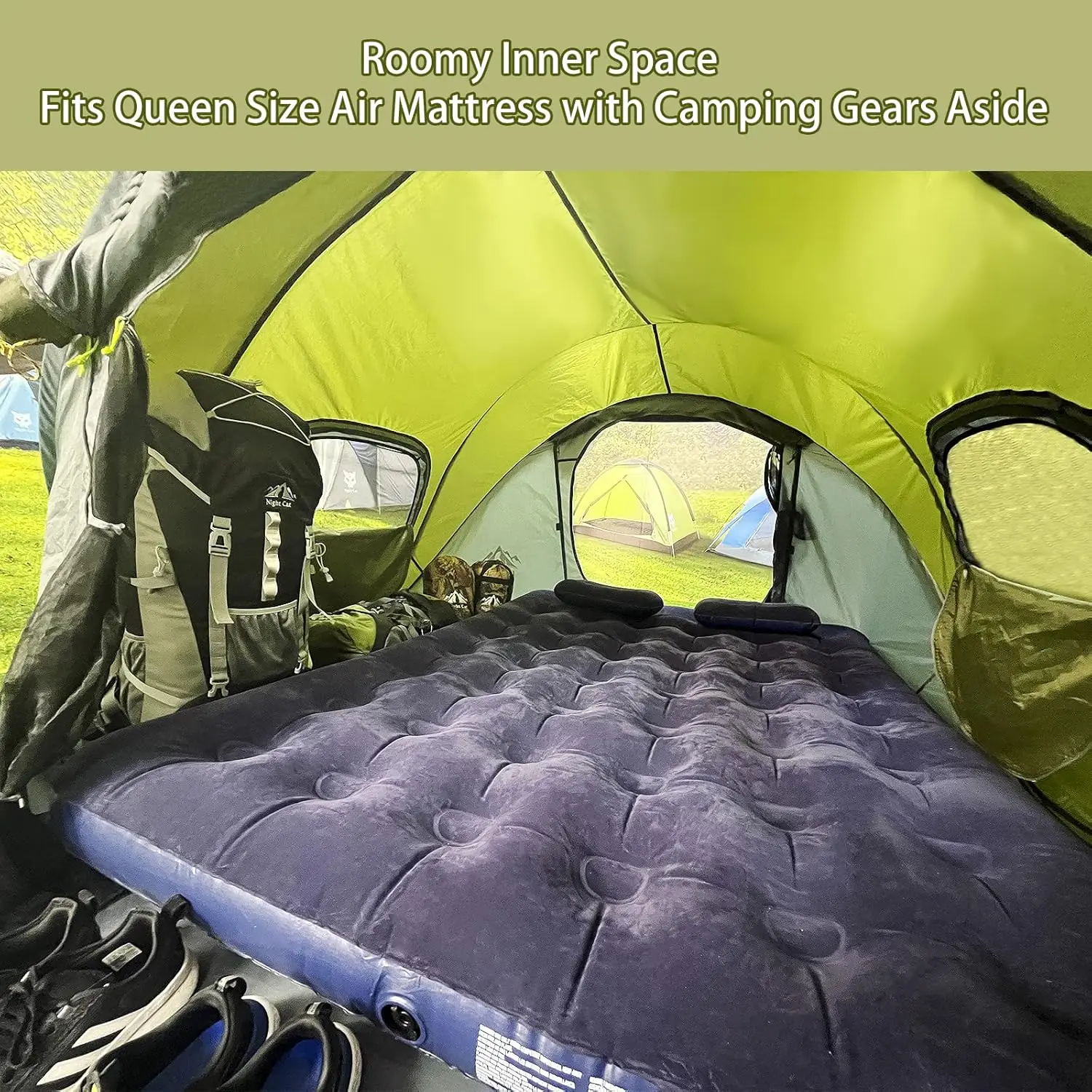
When Pop-Up Tents Aren’t Enough: Weather Alternatives to Consider
While waterproof pop-up tents serve many camping situations well, certain weather conditions call for more robust shelter options. Recognizing when to choose alternatives can make the difference between an enjoyable outdoor experience and a miserable one.
Extended heavy rainfall exceeding 24 hours, strong sustained winds above 20-25 mph, or camping in areas with unpredictable severe weather all suggest the need for something beyond typical pop-up tent capabilities. In these conditions, traditional camping tents with more substantial pole structures and advanced weatherproofing features provide significantly better protection.
Some excellent alternatives include hybrid quick-pitch tents that combine some convenience features of pop-ups with the structural integrity of traditional tents. These models take slightly longer to set up (5-10 minutes versus instant) but offer much better stability in challenging conditions.
When maximum weather protection is essential, waterproof camping tents with dedicated pole structures, full-coverage rainflies, and reinforced guy-out points deliver superior performance. For winter conditions or high mountain environments, 4-season winter 2-person tents provide the ultimate weather protection with features designed for extreme environments.
For fair-weather campers who still value convenience, lightweight pop-up tents with adequate waterproofing offer the best balance of protection and easy setup. Ultimately, matching your shelter to your expected conditions ensures you’ll stay comfortable no matter what the weather brings.

